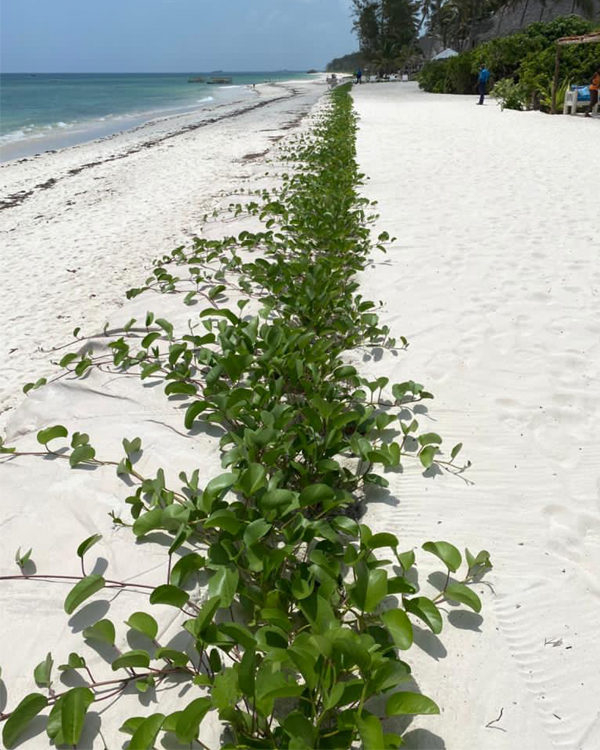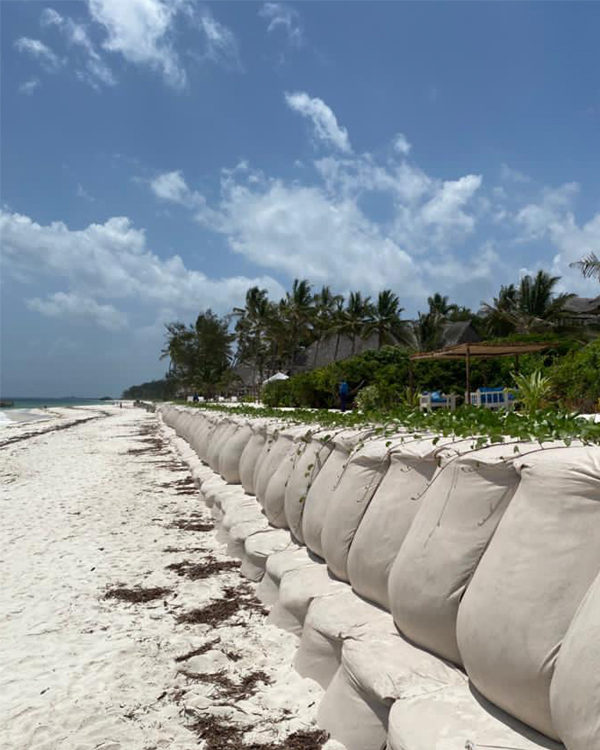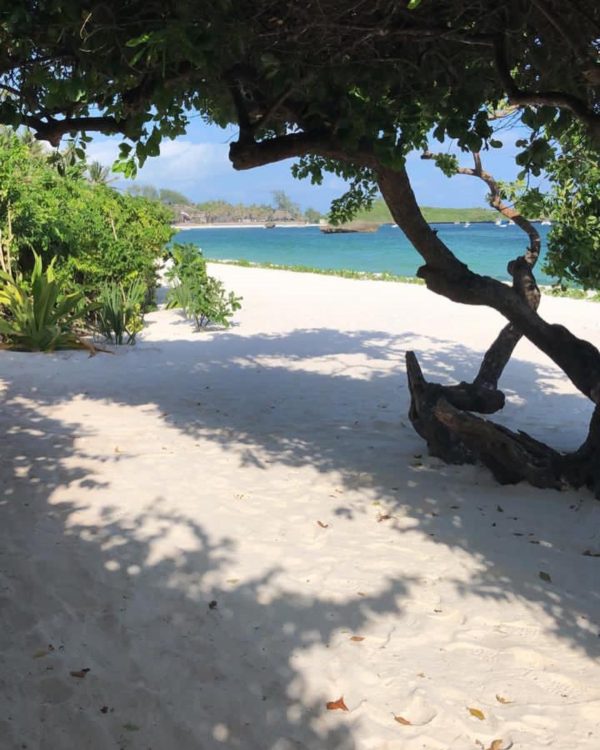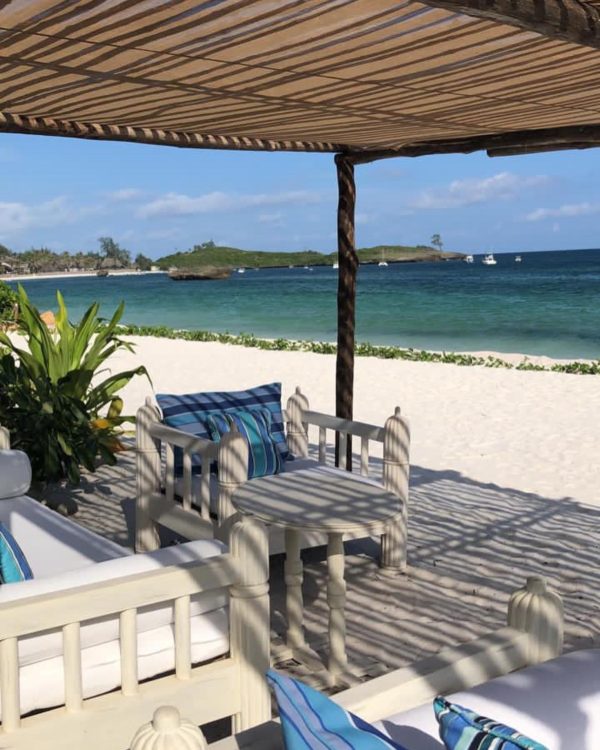Coastal erosion is a natural phenomenon which continues to impact shorelines and beachfront properties globally. Over time, the process of erosion deteriorates shorelines leaving coral reefs exposed, causing harm to natural vegetation & wildlife, uprooting trees, scouring foundations of beach walls resulting in collapsed walls, loss of beach sand, natural dunes and valuable property frontage.
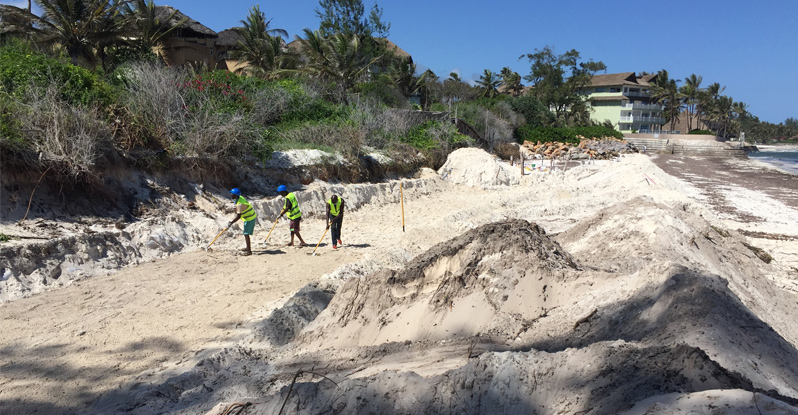
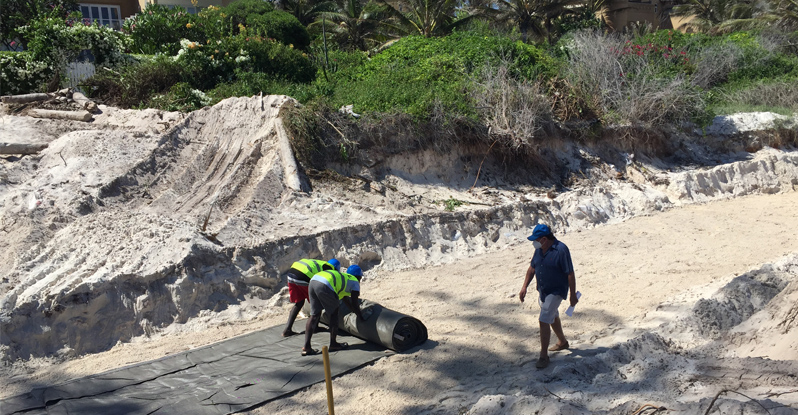
Geotextiles EA has partnered with the creators of Trapbag® from the US to develop environmentally friendly and effective solutions for protection against coastal erosion. Trapbags were originally designed for emergency deployment against flood protection and are fully tested by the US Army Corp of Engineers. They have been specifically designed to provide temporary or permanent solutions for disaster situations such as coastal protection, flooding, erosion control, temporary cofferdams, levee raising, dune stabilisation, property protection and beach nourishment.
Due to their quick deployment and cost effectiveness they are highly suited for Africa and scenarios where specialised equipment is not available or heavy plant is not permitted on protected marine environments. The chain of cellular bags are easily deployed and filled with manual labour.
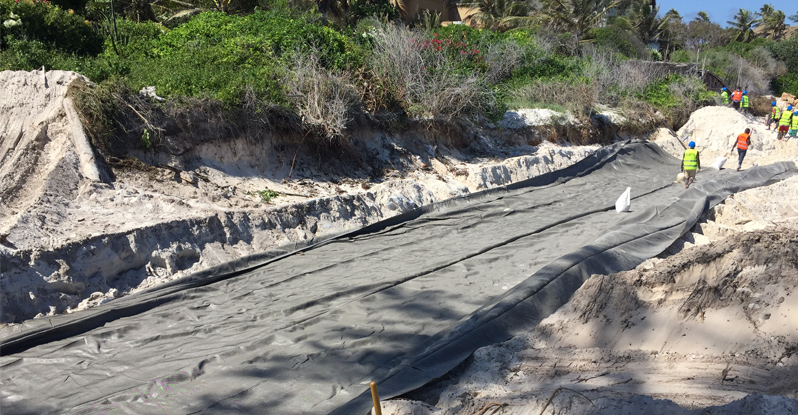
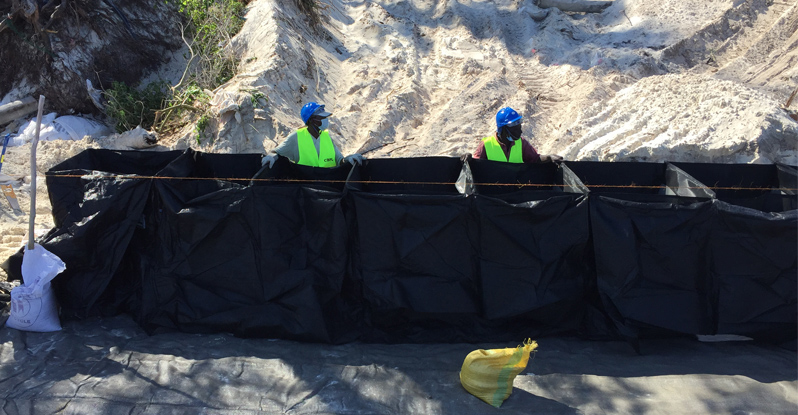
The design & construction of coastal protection measures is a highly specialised field which GEA is at the forefront of in Kenya. The sand filled TrapBags provide the stability required to withstand the impact of high wave energy in coastal environments. The Trapbag wall constructed in front of Medina Palms in Watamu is 2m in height (two tiers of Trapbags) and approximately 97m in length which lies over 6m in front of the hotel’s original eroded frontage. A combination of 4.5T geocontainers were used to prevent scouring at either end due to existing concrete walls built along adjacent properties exacerbating erosion conditions.
On completion of the project, the hotel gained a perched beach where tourists can enjoy an unobstructed view of the ocean. The Trapbags received an extra UV sand-coloured coating rendering them almost invisible. The bottom tier is almost completely buried under sand and will remain covered until a significant monsoon tide event displaces the beach sand. To restore the dune, re-nourishment efforts kicked off by planting native coastal vegetation.
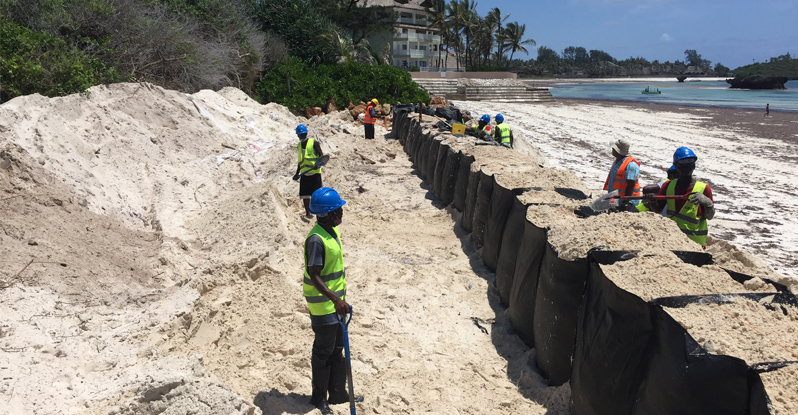
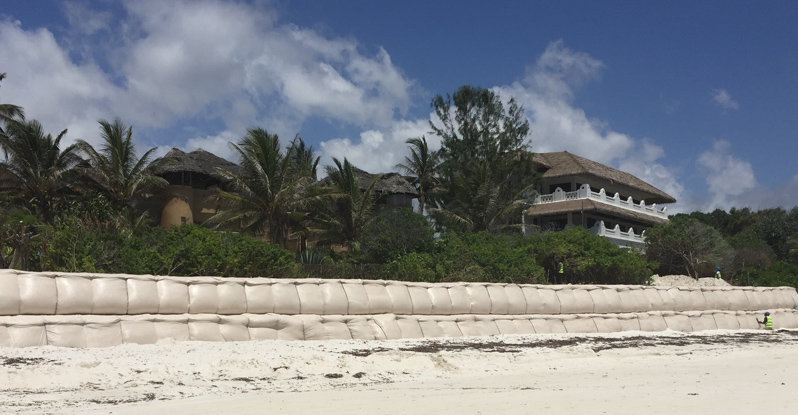
GEA provided the technical design, supply and installation of the project, working closely with local authorities including NEMA, to ensure the construction of the project was carried out in accordance with their conditions. The Trapbags provide an eco-friendly solution and a soft-engineering alternative for protecting beach properties as well as reinstating lost beach frontage.
